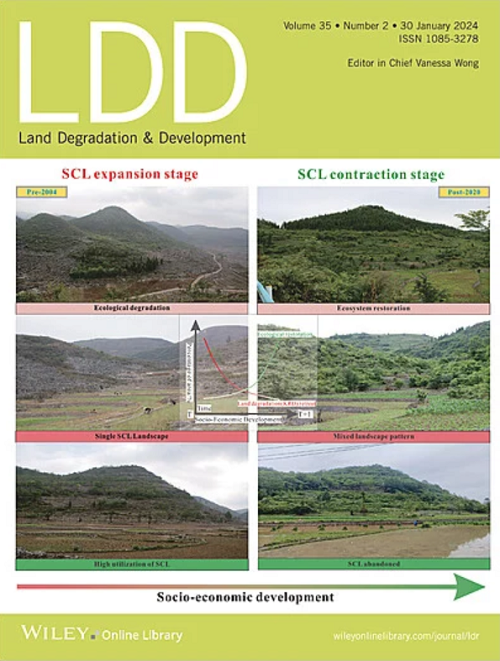地下水位恢复对干涸泥炭地微生物群落和酶活性的影响
IF 3.6
2区 农林科学
Q2 ENVIRONMENTAL SCIENCES
引用次数: 0
摘要
水文条件对排水泥炭地的恢复至关重要,泥炭微生物对环境变化高度敏感。研究了地下水位恢复对长白山白江河泥炭地泥炭微生物群落和酶活性的影响。从自然、排水和复湿区域收集0至50 cm深度的泥炭样品,分析其理化性质、磷脂脂肪酸(PLFAs)和酶活性(两种氧化酶和三种水解酶)。主要发现表明,微生物群落和酶活性在3个地区和不同泥炭深度之间存在显著差异。复湿降低了氧化酶,而增加了氧区水解酶的活性,而过渡区和缺氧区表现出介于排水区和自然区之间的中间氧化酶。WT恢复显著增加了微生物生物量,改变了群落结构,在复湿区氧区有更高的PLFAs总量、真菌、放线菌和G -细菌PLFAs。酚类物质和WC是泥炭有机碳(OC)积累的主要调节剂,控制微生物活动的C限制。值得注意的是,再润湿增加了泥炭OC和活性OC含量,主要是由于含水量(WC)和微生物生物量的变化。这些发现为泥炭地恢复的机制提供了重要的见解,并强调了再湿润在增强碳固存和恢复生态功能方面的潜力。本文章由计算机程序翻译,如有差异,请以英文原文为准。
Effect of Water Table Restoration on Microbial Communities and Enzyme Activities in Drained Peatland
Hydrological conditions are critical for restoring drained peatlands, and peat microorganisms are highly sensitive to environmental changes. This study investigated the effects of water table (WT) restoration on peat microbial communities and enzyme activities in the Baijianghe peatland of the Changbai Mountains. Peat samples from 0 to 50 cm depths were collected from natural, drained, and rewetted areas to analyze physicochemical properties, phospholipid fatty acids (PLFAs), and enzyme activities (two oxidases and three hydrolases). Key findings revealed that microbial communities and enzyme activities varied significantly among the three areas and across different peat depths. Rewetting reduced oxidases, whereas it increased hydrolase activities in the oxic zone, while transitional and anoxic zones exhibited intermediate oxidases between drained and natural areas. WT restoration significantly increased microbial biomass and altered community structure, with higher total PLFAs, fungal, actinomycetes, and G− bacterial PLFAs in the oxic zone of the rewetted area. Phenolics and WC were the primary regulators of peat organic carbon (OC) accumulation, controlling C limitations for microbial activities. Notably, rewetting increased peat OC and active OC contents, primarily due to changes in water content (WC) and microbial biomass. These findings provide critical insights into the mechanisms driving peatland restoration and underscore the potential of rewetting to enhance carbon sequestration and restore ecological functions.
求助全文
通过发布文献求助,成功后即可免费获取论文全文。
去求助
来源期刊

Land Degradation & Development
农林科学-环境科学
CiteScore
7.70
自引率
8.50%
发文量
379
审稿时长
5.5 months
期刊介绍:
Land Degradation & Development is an international journal which seeks to promote rational study of the recognition, monitoring, control and rehabilitation of degradation in terrestrial environments. The journal focuses on:
- what land degradation is;
- what causes land degradation;
- the impacts of land degradation
- the scale of land degradation;
- the history, current status or future trends of land degradation;
- avoidance, mitigation and control of land degradation;
- remedial actions to rehabilitate or restore degraded land;
- sustainable land management.
 求助内容:
求助内容: 应助结果提醒方式:
应助结果提醒方式:


